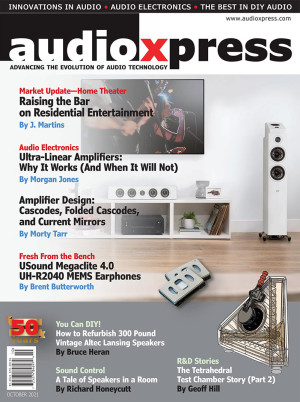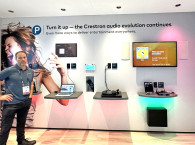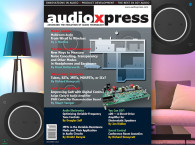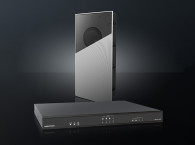
This year's Market Update on Home Theater and Home Entertainment provides a wide picture of market trends and addresses both the products that appeal directly to consumers, and installation-oriented solutions for home entertainment. The article discusses the impact that wireless audio solutions available with support for the Wireless Speaker & Audio (WiSA) Association technology are having in the market, and how smart home technologies continue to influence and determine major trends in both consumer's behavior and residential integration. The launch of Matter and its impact for home solutions, the lack of progress of Audio-Over-IP in the residential front, and the importance of Power over Ethernet technology are some of the topics covered in this report. The Market Update also details the latest products and systems from new and established brands in the residential and home theater segments, some of which were announced under embargo just prior to this edition going to print.
This edition's Fresh From the Bench features USound's Megaclite 4.0 UH-R2040 Earphones, a reference design that uses one USound Achelous UT-P2018 MEMS driver per earpiece, and which the Austrian MEMS manufacturer sent to audioXpress for evaluation. MEMS drivers are comparable in length and width to smaller balanced armatures, but thinner. They’re SMT reflow-compatible, so easy to incorporate into automatic assembly processes.
Brent Butterworth experimented with the Megaclite 4.0 UH-R2040 and wrote a review of this reference design, intended to prove that MEMS drivers can work well in a standard earphone design. Butterworth listened, measured, and compared the performance of this new design against conventional in-ear products using established driver technologies. Is the technology ready for the market? Are the benefits obvious to the industry? Those are some of the questions addressed.
This edition also completes the excellent article by Geoff Hill, outlining the Tetrahedral Test Chamber Story. In this second part, Geoff Hill revisits the development of this innovative loudspeaker test chamber, scalable to any size of loudspeaker driver, and now defined in international standards. The chambers are in use throughout the world, providing consistent, reliable, and accurate measurements of loudspeaker transducers and loudspeaker systems without the cost, complexity, and space requirements of an anechoic chamber.

For this month's Sound Control column Richard Honeycutt tells us A Tale of Speakers in a Room. The entertaining case study, based on actual professional experience, shows us why understanding the strengths and weaknesses of different speaker designs and modeling/comparing the best candidates will ultimately lead to the best results for any space.
Diving into the fascinating world of audio electronics, this edition of audioXpress features the first serving of an interesting work by Morgan Jones. "Ultra-Linear: Why It Works (And When It Will Not)" is the title of an article in which the author reviews the story and the principles of ultra-linear electronic circuits, looking in detail at several tube types.
From the triode to the pentode, from Alan Blumlein's patented distributed loading solution to the ultra-linear electronic circuits designed by David Hafler and his colleague Herbert Keroes in 1951, this article reviews the story and the principles of the technique, which were later applied very successfully by Peter Walker at QUAD, or by McIntosh Laboratories, among many others. Morgan Jones not only shows how ultra-linear works, but more importantly, predicts when it won’t.
This edition also includes another audio electronics article that is certain to appeal to anyone focused on audio amplifier design. "Cascodes, Folded Cascodes, and Current Mirrors" by Morty Tarr is another fascinating exploration of circuit topologies that are used to provide specific functions for an amplifier design. Cascodes, folded cascodes, and current mirrors are some of these topologies, intended to improve the performance of the devices, but which also add complications. In this first article in a two-part series, the author discusses cascodes and folded cascodes, useful to improve high-frequency response and device linearity.
And as a complement to Morty Tarr's article, in his Hollow-State Electronics column, Richard Honeycutt writes about the Effects of Negative Feedback. Expanding on his previous articles on the topic, Honeycutt uses LTSpice modeling to determine how different amounts of negative feedback affect the output from a hollow-state power amplifier.
 And we did not forget speaker builders. This month, Bruce Heran writes about Altec Lansing Vintage Speakers and showcases how refurbishing these highly coveted speakers continues to be a rewarding experience. Vintage Altec Lansing speakers continue to be in high-demand all over the world and driver manufacturers continue to keep replacement parts in stock, while requests for even the most obscure models persists.
And we did not forget speaker builders. This month, Bruce Heran writes about Altec Lansing Vintage Speakers and showcases how refurbishing these highly coveted speakers continues to be a rewarding experience. Vintage Altec Lansing speakers continue to be in high-demand all over the world and driver manufacturers continue to keep replacement parts in stock, while requests for even the most obscure models persists.audioXpress is published 12 times per year, and available in print and online. Subscribing to the digital online version allows immediate access and is available here: www.audioxpress.com/page/audioXpress-Subscription-Services.html
If you wish to buy a single printed issue or the complete audioXpress archive on USB, from 2000 to 2021 (yes, including the latest issue), just visit our online shop at www.cc-webshop.com
Don't miss out, get your copy of audioXpress right now at www.gotomyxpress.com






